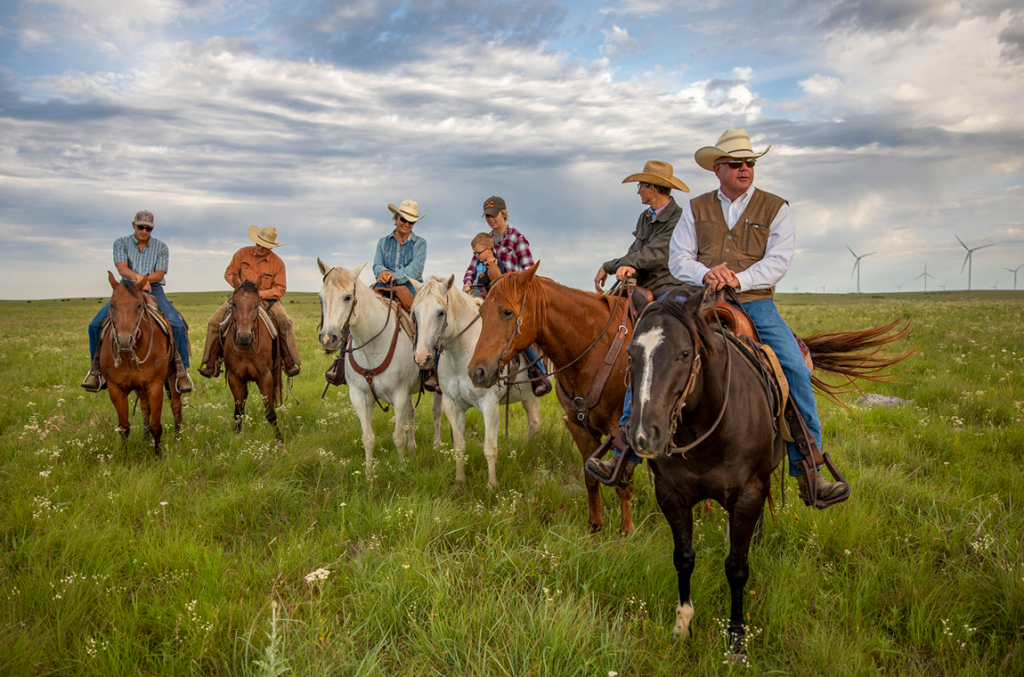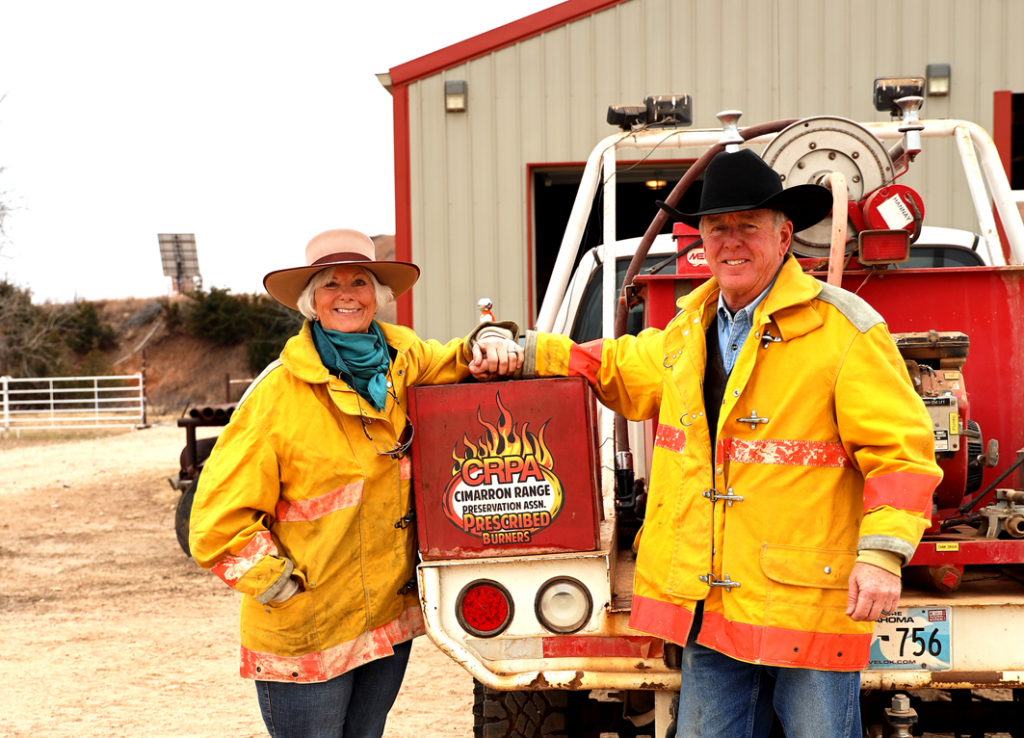
The Coffey family is committed to land, livestock and legacy.
Conserving natural resources is top of mind on the Double C Cattle Co. in Springer, Oklahoma, on Earth Day and every day.
Located in the Arbuckle Mountains, the Double C Cattle Co. is a five-generation ranch owned and operated by Chuck and Ruth Coffey. Their conservation efforts involve proper grazing management combined with prescribed fire to promote biodiversity and a healthy ecosystem.
“Our ranch goal is to optimize profitability while managing the land for the success of future
generations,” Chuck Coffey said. “I hope that others will see and understand the importance of
managing livestock, wildlife and the environment together as one big system because they all
simultaneously affect one another.”
They have established 20 solar wells that allow them to use parts of the ranch without a natural water
source. This allows greater grazing distribution and rotational grazing which leaves plant residuals
and ground cover to protect the soil. They also use prescribed fire to remove invasive Eastern Red
Cedars.

The Coffeys are always willing to adopt new ideas and have wind turbines on their land that produces
electricity supplied to nearby towns.
“This land is able to produce enough beef, enough electricity and enough water to supply 70,000
homes,” said Chuck Coffey.
Chuck and Ruth work with their three grown children to manage the ranch, and proper stewardship is
a part of the legacy they are passing down to the next generation. “We value land, livestock and legacy,” said Aaron Coffey. “Those are the three most important words
at Double C Cattle Co.”
The Coffeys were honored for their land stewardship in 2020 with the Region IV Environmental Stewardship Award from the National Cattlemen’s Beef Association.

Conserving natural resources is top of mind at the Lazy KT Ranch in Freedom, Oklahoma, on Earth Day and every day. Through the Dust Bowl, severe drought in the 1950s and drought again today, conservation has allowed the ranch to continue.
Rose Kline Blunk began reclaiming the land by removing Eastern Red Cedars in the 1990s. Cutting the invasive trees and prescribed fire proved to be effective and soon native grasses began to recover in areas dominated by cedars.
In 2012, Rose’s daughter, Katie Blunk and her husband Michael Horntvedt, returned to the ranch and continued the efforts of conservation and cattle ranching. They continue to use prescribed burning on one-third of their acres each year. They also use patch burning to draw their heard of Angus cattle to specific areas of their land and preventing overgrazing.
This cycle of prescribed fire, cattle grazing and then a rest period operates just as in the days when bison roamed prairies which were reinvigorated by wildfires.
These extensive efforts have been successful for Michael and Katie. Their 1,500-acre ranch supports 70 cow-calf pairs and many yearling animals that will be sold as seedstock to other ranches. They have reclaimed several natural springs across the ranch and recharged many ponds now that the cedars are not consuming extra water. Regrowth of indigenous grasses has created habitat for pollinators and endangered species such as the Lesser Prairie Chicken.
In 2021, Lazy KT Ranch was awarded the Leopold Conservation Award from the Sand County Foundation. Katie and Michael are also leaders in conservation, serving on the Cimarron Range Preservation Association and working with Okies for Monarchs.
“In the scheme of life, we are not a huge ranch, but we have created a sustainable ranch with desirable cattle that we can market for enhanced valued while incorporating them into the combination of conservation practices we adhere to on the ranch,” Katie Blunk said. “Land stewardship and cattle stewardship go hand in hand. That’s sustainability.”
















